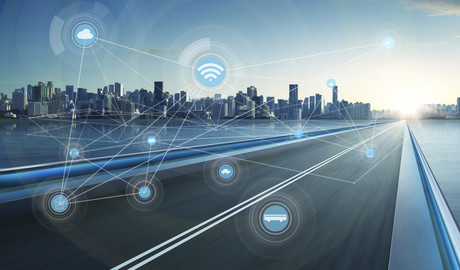5G to fast-track smart cities

The fifth-generation wireless network is expected to fast-track the smart city, increasing download speeds, supporting driverless cars and helping cities provide better services by expanding their use of IoT applications. But there is still more to be done to prepare for 5G in the smart city space.
Channa Seneviratne, Executive Director of Network Infrastructure Engineering at Telstra, said 5G networks will bring the smart city to life, describing it as “a big leap in wireless communications that will open up a world in which everything can communicate with each other”.
While 5G is not expected to replace 4G networks, it will improve the bandwidth, capacity and reliability of mobile broadband. Thousands of small antennae will be packed into cell towers, utility poles and buildings, pushing mobile speeds from 100 Mbps to upward of 10 Gbps.
This will help improve connectivity and support IoT technology expansion; as more IoT products go online, they will send massive amounts of data through 5G networks. Autonomous vehicles will be able to connect with traffic lights, road signs and wearables and make better safety decisions, and autonomous drones can adapt behaviour based on real-time data inputs.
The property industry, however, will need to develop strategies for how properties interact with 5G. Andrew Maher, Aurecon’s Chief Digital Officer, explained, “5G’s high frequency wave doesn’t penetrate buildings as easily as 4G. To maximise 5G, we will need to think about how to network buildings to enable the technology to permeate.”
Maher said building owners will no longer be able to think of their property in isolation.
“We’ve started thinking about how we harvest and distribute energy within a precinct. In much the same way, we’ll have to think about how we use technology.
“5G is about data. It promotes machine-to-machine communication, enabling much more data to move around. This means many more devices, especially in our cities.”
Chris Isles, Executive Director of Planning for Place Design Group, said we can expect a “proliferation of IoT sensors, cameras and antennas on every street”, and raised concerns about what this might mean at the street level.
“How we curate and build so that our streets don’t become forgotten wastelands of technology is a big challenge.”
Isles said city-shapers and telecommunications companies can work together to co-locate digital infrastructure. “Cities could gain free Wi-Fi for residents and a percentage of revenue earned on digital advertising. Street infrastructure can move from a cost and maintenance burden to a source of revenue,” Isles explained.
According to Maher, we are not yet designing spaces to accommodate 5G, and he warned: “This is going to come very quickly — so don’t get caught out. If you go into this blindly without testing, you could create your own blackspot.”
Seneviratne emphasised the power of partnerships as Telstra gears up for the rollout of 5G in 2019. “We want to work with the property industry to understand its problems and help solve them using 5G. We want to co-solve and co-create together.”
Channa Seneviratne, Chris Isles and Andrew Maher are just three speakers at Smart Cities Week, to be held in Sydney from 29–31 October 2018.
International subsea cable arrives on Sunshine Coast
Part of Google's Australia Connect initiative, the Tabua cable will connect Queensland...
Preferred major works contractor earmarked for Marinus Link
The Tas–Vic undersea interconnector project has announced a preferred contractor for its...
New mobile towers target Western Vic blackspots
AusNet plans to build three mobile communication towers in Western Victoria as part of the...



